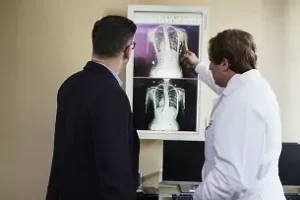Exercises for osteoporosis
Many older people are vulnerable to osteoporosis, a condition where bones become fragile and fracture easily.
In the United States, approximately 10 percent of people aged 50 and over have this condition.
In this article, we’re going to learn about exercises for osteoporosis prevention. Exercises for osteoporosis can help protect you from fractures and contribute to a healthy lifestyle.
Before you start on a new exercise regime, make sure you speak with your doctor, so schedule an appointment today.
Bone strengthening exercises for osteoporosis
Bone strengthening exercises are weight bearing exercises that make you work against gravity. This usually means that your feet are connected to the ground and your body is working to keep you upright. These exercises keep your bones, joints, and muscles strong and healthy and reduce the risk of fractured bones.
Note that there is a difference between weight bearing exercises for osteoporosis and non weight bearing exercises.
Bone strengthening exercises examples include:
- Brisk walking
- Dancing
- Racket sports
- Tai chi
Exercises for osteoporosis of the spine should be gentle and not involve twisting or bending. The best exercises for osteoporosis of the spine include walking at a relaxed pace and gentle aerobic workouts.
Non weight bearing exercises are activities you can do without having to support your own body weight, such as swimming or riding a bicycle.
Exercises for osteoporosis prevention include both these activities. Weight bearing exercises strengthen your bones, while non weight bearing exercises can help you with overall fitness.
Weight bearing exercises
Exercises for osteoporosis prevention are a great way to guard against fractures and keep fit at the same time.
Weight bearing exercises get your bones and muscles working against gravity so you stay upright.
Weight bearing exercises for osteoporosis work by stimulating your bones into becoming stronger and reducing the likelihood or effects of osteoporosis. This is why they are also known as bone strengthening exercises. Bone strengthening exercises examples include dancing, walking, hiking, and aerobics.
Weight bearing exercises to do at home include:
- Stair climbing
- Squats
- Weightlifting
- Gentle yoga
Non weight bearing exercises
Both bone strengthening and non weight bearing exercises are important exercises for osteoporosis prevention.
While bone strengthening exercises will build up bone, non weight bearing exercises will help keep your heart and lungs fit and improve your flexibility and balance. This will help prevent falls.
While bone strengthening exercises examples include activities like walking and aerobics, here are some non weight bearing exercises:
- Swimming
- Water aerobics
- Cycling
- Rowing
- Any kind of seated exercises like chair squats, boxer punches, and arm circles
Osteoporosis exercises to avoid
Non weight bearing exercises and weight bearing exercises for osteoporosis should aim to strengthen your bones without putting you at risk.
Bone strengthening exercises examples like tai chi, yoga, and walking are ideal because they build up your strength safely.
When you choose bone strengthening exercises, you should be careful to avoid any that could result in fractures.
These include weight bearing exercises such as jogging, running, and jumping. You should also avoid any exercises where you bend at the waist and twist, like sit-ups, tennis, golf, and some yoga poses.
The path to wellness
While many older people are vulnerable to osteoporosis, they can still protect their bone health with a combination of weight bearing and non weight bearing exercises.
Incorporating these into your daily routine will help make your bones stronger and benefit your overall health.
Want to know more about receiving help with your or a loved one’s osteoporosis? Check out our Chronic Care Management page to find out how we can help you live a healthier life.
Book an appointment with one of our healthcare professionals, who will discuss your issues in depth and get you on the path to wellness.

